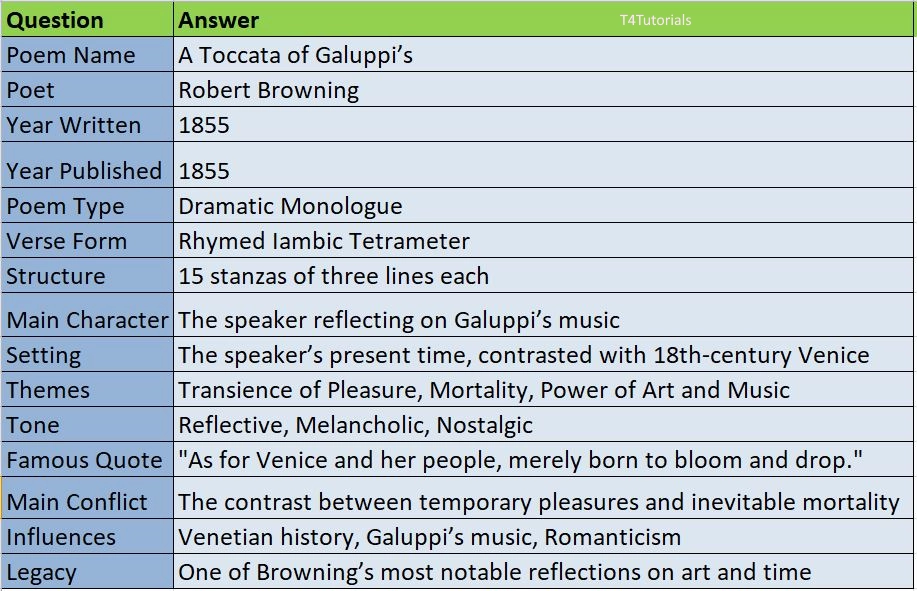Summary:
“A Toccata of Galuppi’s” is a reflective poem by Robert Browning, published in 1855 as part of Men and Women. The poem revolves around the speaker listening to a toccata (a type of musical composition) by Baldassare Galuppi, an 18th-century Venetian composer. As the speaker imagines the past, he envisions the lively, pleasure-seeking society of Venice, where people danced and enjoyed themselves under Galuppi’s music. However, beneath this joy lies a sense of melancholy, as the poem contemplates the fleeting nature of pleasure, mortality, and the contrast between past and present. Through a blend of historical reflection and philosophical musing, Browning highlights themes of impermanence, the passage of time, and the power of music to evoke deep emotions.
10
Score: 0
Attempted: 0/10
Subscribe
| Question | Answer |
| Poem Name | A Toccata of Galuppi’s |
| Poet | Robert Browning |
| Year Written | 1855 |
| Year Published | 1855 |
| Poem Type | Dramatic Monologue |
| Verse Form | Rhymed Iambic Tetrameter |
| Structure | 15 stanzas of three lines each |
| Main Character | The speaker reflecting on Galuppi’s music |
| Setting | The speaker’s present time, contrasted with 18th-century Venice |
| Themes | Transience of Pleasure, Mortality, Power of Art and Music |
| Tone | Reflective, Melancholic, Nostalgic |
| Famous Quote | “As for Venice and her people, merely born to bloom and drop.” |
| Main Conflict | The contrast between temporary pleasures and inevitable mortality |
| Influences | Venetian history, Galuppi’s music, Romanticism |
| Legacy | One of Browning’s most notable reflections on art and time |